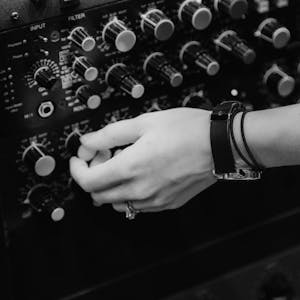Spacecraft Dynamics Capstone: Mars Mission
About this Course
The goal of this capstone spacecraft dynamics project is to employ the skills developed in the rigid body Kinematics, Kinetics and Control courses. An exciting two-spacecraft mission to Mars is considered where a primary mother craft is in communication with a daughter vehicle in another orbit. The challenges include determining the kinematics of the orbit frame and several desired reference frames, numerically simulating the attitude dynamics of the spacecraft in orbit, and implementing a feedback control that then drives different spacecraft body frames to a range of mission modes including sun pointing for power generation, nadir pointing for science gathering, mother spacecraft pointing for communication and data transfer. Finally, an integrated mission simulation is developed that implements these attitude modes and explores the resulting autonomous closed-loop performance. Tasks 1 and 2 use three-dimensional kinematics to create the mission related orbit simulation and the associated orbit frames. The introductory step ensures the satellite is undergoing the correct motion, and that the orbit frame orientation relative to the planet is being properly evaluated. Tasks 3 through 5 create the required attitude reference frame for the three attitude pointing modes called sun-pointing, nadir-pointing and GMO-pointing. The reference attitude frame is a critical component to ensure the feedback control drives the satellite to the desired orientation. The control employed remains the same for all three pointing modes, but the performance is different because different attitude reference frames are employed. Tasks 6 through 7 create simulation routines to first evaluate the attitude tracking error between a body-fixed frame and a particular reference frame of the current attitude mode. Next the inertial attitude dynamics is evaluated through a numerical simulation to be able to numerically analyze the control performance. Tasks 8-11 simulate the closed-loop attitude performance for the three attitude modes. Tasks 8 through 10 first simulate a single attitude at a time, while tasks 11 develops a comprehensive attitude mission simulation which considers the attitude modes switching autonomously as a function of the spacecraft location relative to the planet. The material covered is taking from the book \"Analytical Mechanics of Space Systems\" available atCreated by: University of Colorado Boulder

Related Online Courses
This is a self-paced lab that takes place in the Google Cloud console. In this lab you view the BigQuery logs inside Cloud Logging, set up a sink to export them back into BigQuery, and then use SQL... more
Kursus ini memperkenalkan Vertex AI Vector Search dan menjelaskan bagaimana layanan ini dapat digunakan untuk membangun aplikasi penelusuran dengan API model bahasa besar (LLM) untuk embedding.... more
By the end of this project, you will be ready to use Boom Learning with your class. Boom Learning allows teachers to use self-grading digital task cards (Boom Cards) with their students to check... more
This Specialization will give you the knowledge and tools you need to record and produce professional sounding music. You will begin by developing your identity, vision, and intention as an artist... more
In this beginner level project, you will implement and build ATM user interface using routing, understand Parent and Child Routing and understand WildCard Routes in Angular which will be helpful in... more








